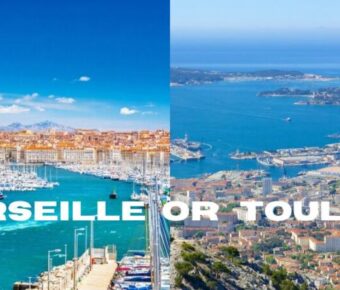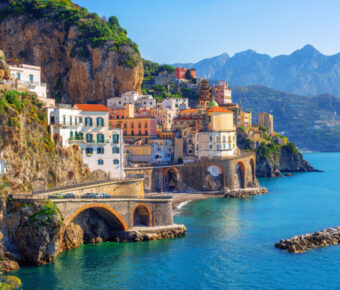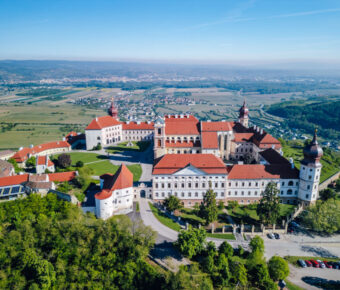
Split vs Zagreb: Which Croatian City Offers the Better Cultural Experience in 2025
Choosing between Split and Zagreb puts travelers at a fascinating crossroads in Croatia. These two cities offer completely different experiences, with Split’s coastal Mediterranean charm contrasting Zagreb’s elegant central European atmosphere. The distance between them is 161 miles, making it easy to visit both cities in one trip.
Split wraps around the sparkling Adriatic Sea, where ancient Roman ruins blend with bustling cafes and beaches. The city comes alive in summer with tourists seeking sun and history. Zagreb sits inland as Croatia’s capital, filled with museums, parks, and classic architecture that feels more like Vienna or Budapest than a Mediterranean destination.
Both cities fit different travel styles and budgets. Zagreb tends to be cheaper than Split, especially during peak summer months when coastal prices surge. Zagreb attracts culture lovers and those seeking authentic Croatian city life, while Split draws beach enthusiasts and history buffs wanting to explore its UNESCO-listed Roman palace.
Contents
- Geography and Climate
- Position and Landscape
- Weather Patterns
- Historical and Cultural Insights
- Zagreb’s Past Narratives
- Split’s Diocletian’s Palace
- Leisure and Recreation
- Nightlife and Entertainment
- Parks and Outdoor Activities
- Accommodation and Transportation
- Staying in Zagreb
- Finding a Place in Split
- Culinary Journey
- Zagreb’s Gastronomy
- Split’s Seafood and Dalmatian Cuisine
- Arts and Museums
- Cultural Institutions in Zagreb
- Split’s Artistic Venues
- Shopping and Commercial Centers
- Markets in Zagreb
- Boutiques and Shops in Split
- Travel Costs and Budgeting
- Tourist Destination Appeal
- Frequently Asked Questions
- What are the major differences between the cultural experiences in Split and Zagreb?
- How does the cost of living in Split compare to that in Zagreb for tourists?
- Can you highlight unique attractions in Split that are not found in Zagreb?
- What transportation options are available for travelers moving between Zagreb and Split?
- From a local’s perspective, what distinct advantages does Zagreb offer over Split?
- What seasonal events or festivals are unique to Split in contrast to Zagreb?
- More Travel Guides
Geography and Climate
Split and Zagreb sit in vastly different parts of Croatia, creating unique environments that shape daily life. The geography and weather patterns of these cities make each one perfect for different types of trips.
Position and Landscape
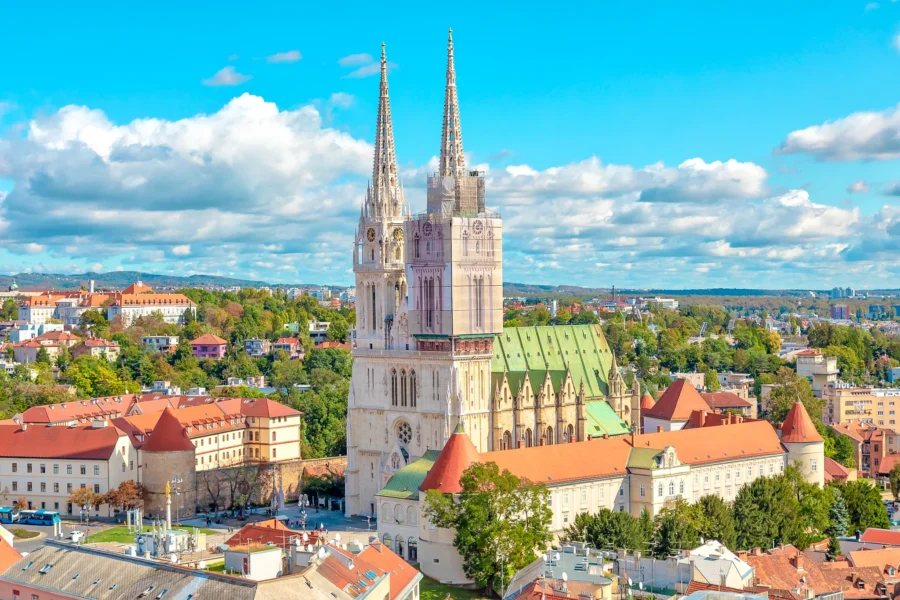
Zagreb stands inland as Croatia’s capital, nestled between the Medvednica mountain and the Sava River. The city spreads across rolling hills at about 400 feet above sea level, giving it a mix of upper and lower towns connected by a funicular railway.
Split hugs the Dalmatian coast along the bright blue Adriatic Sea. Ancient Roman ruins and modern buildings blend together on a peninsula that juts into the water. The dramatic Mosor Mountains rise behind the city, creating a stunning backdrop.
The nearby Marjan Hill offers amazing views of Split and the nearby Dalmatian Islands. You can spot Brač, Hvar, and other islands dotting the horizon on clear days.
Weather Patterns
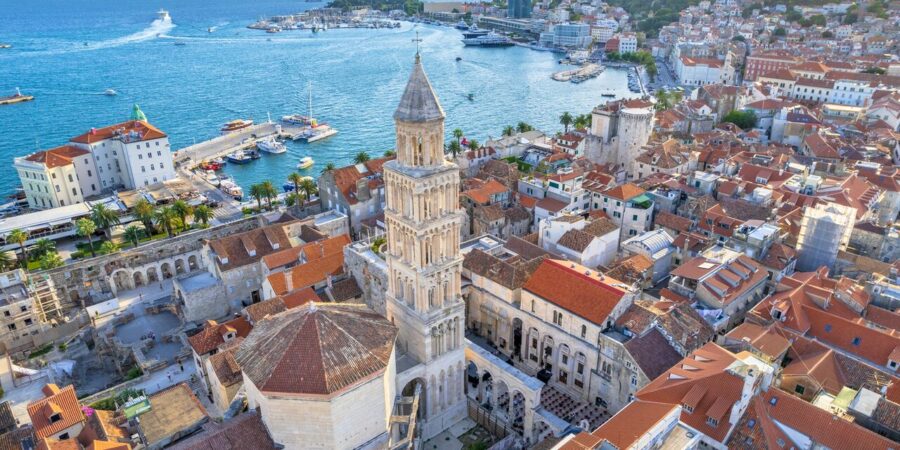
Zagreb experiences typical Eastern European continental weather with four distinct seasons. Summers reach the high 20s°C (80s°F), while winters often drop below freezing with occasional snow. Spring brings mild temps and colorful blooms to the city parks.
Split enjoys a Mediterranean climate with over 2,600 hours of sunshine each year. Summers are warm and dry, perfect for beach days. Winter temperatures rarely fall below 5°C (41°F), making Split a good year-round destination.
The coastal winds shape Split’s weather. The gentle maestral brings cool sea breezes in summer, while the strong bura wind can make winter days feel extra chilly.
Historical and Cultural Insights
Zagreb and Split showcase unique cultural treasures that span different eras of Croatian history, with each city preserving distinct architectural and historical legacies.
Zagreb’s Past Narratives
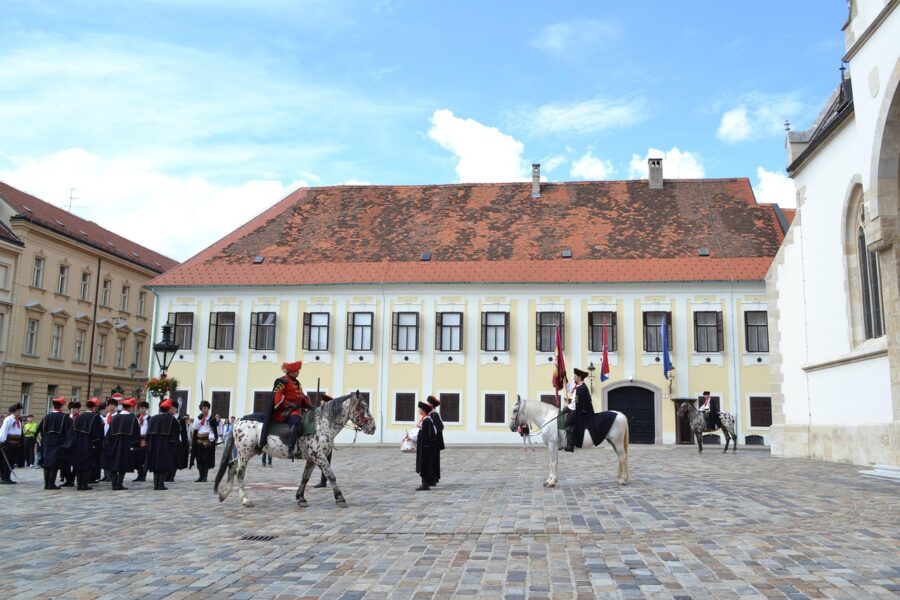
The medieval Upper Town forms Zagreb’s historic heart, with cobblestone streets winding between colorful buildings. St. Mark’s Church stands out with its famous tiled roof displaying the Croatian coat of arms.
Zagreb Cathedral towers above the city as Croatia’s tallest building. Its twin spires have become an iconic symbol of the capital’s skyline. The cathedral faced damage in the 1880 earthquake but was rebuilt in Neo-Gothic style.
Ban Jelačić Square serves as the city’s central meeting point since the 17th century. The massive plaza features a statue of Ban Josip Jelačić, a national hero, and connects the Upper and Lower towns.
Split’s Diocletian’s Palace
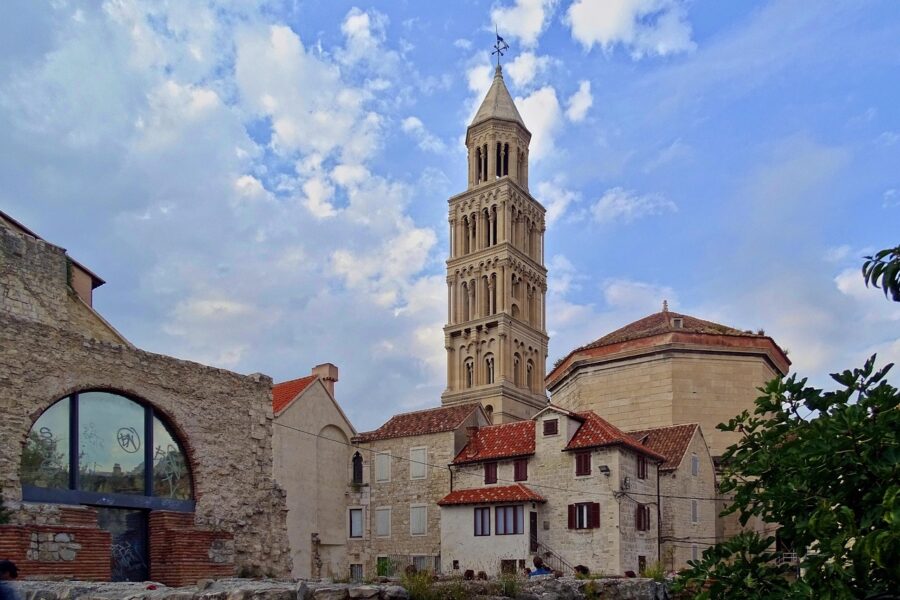
The ancient Roman emperor Diocletian built his retirement palace in Split around 305 AD. The massive complex spans about half of Split’s Old Town and ranks as one of the best-preserved Roman buildings in existence.
The palace walls hide a maze of limestone streets packed with shops, cafes, and homes where people still live today. Its basement halls showcase original Roman architecture and host local artists selling crafts.
The palace’s central square, Peristyle, features original Roman columns and the Cathedral of Saint Domnius. This cathedral started as Diocletian’s mausoleum but transformed into a church in the 7th century.
UNESCO recognized the palace’s immense value by naming it a World Heritage Site in 1979. It stands as a rare example of a Roman palace that evolved into a living city center.
Leisure and Recreation
Split and Zagreb offer distinct entertainment scenes and outdoor activities that cater to different types of travelers. The cities mix modern fun with rich cultural traditions.
Nightlife and Entertainment

Split’s nightlife centers around the ancient stone walls of Diocletian’s Palace. Bars and clubs stay packed until sunrise during summer months. The Croatian National Theatre hosts opera and ballet performances in a stunning historic building.
Zagreb’s nightlife spreads across several districts. The Upper Town features cozy wine bars and jazz clubs. The Lower Town hosts electronic music venues and dance clubs that attract both locals and tourists.
Both cities have excellent live music scenes. Local bands play everything from traditional Croatian folk to modern rock.
Parks and Outdoor Activities
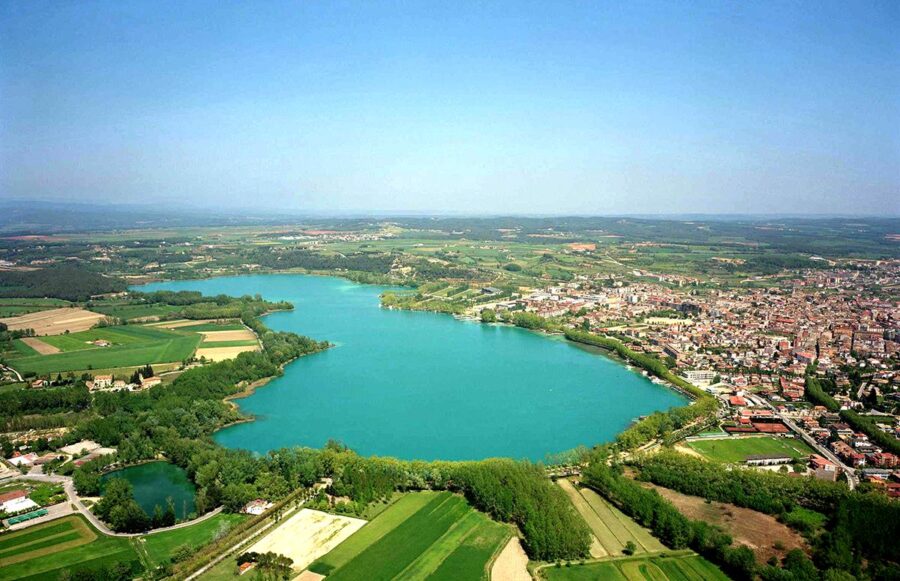
Zagreb’s Jarun Lake lets visitors swim, sail, and jog along scenic paths. The lake area includes sports courts and peaceful picnic spots.
Split’s beaches provide perfect spots for swimming and sunbathing. Bacvice Beach stays busy with locals playing picigin, a unique Croatian water sport. Kasjuni Beach offers clear waters ideal for snorkeling.
Families enjoy Split’s easy access to Krka National Park. The park’s waterfalls and swimming areas make great day trips.
Zagreb’s Maksimir Park features walking trails, a zoo, and five lakes. The park provides a peaceful escape from city life.
Accommodation and Transportation
Finding places to stay and getting around both Zagreb and Split is easy and affordable compared to many European cities. Transport links are good and accommodation options range from budget hostels to luxury hotels.
Staying in Zagreb
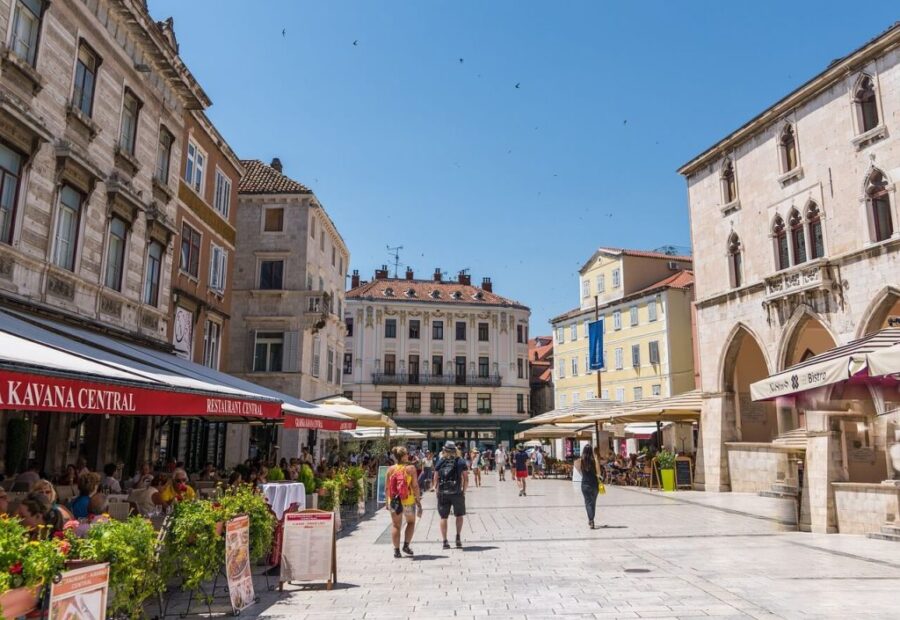
Zagreb offers more modest prices for lodging than coastal Split. Hostels start at $20 per night for dorm beds, while mid-range hotels from Booking.com range from $60-100. Private apartments near Ban Jelačić Square give great access to public transit.
The city’s tram network makes getting around simple. Single tram tickets cost $1.50, with daily passes available for $4.50. Most major attractions sit within walking distance of each other in the historic Upper and Lower Towns.
Zagreb’s main train station connects to other European cities. The airport lies 17km southeast, with regular shuttle buses running to the city center.
Finding a Place in Split
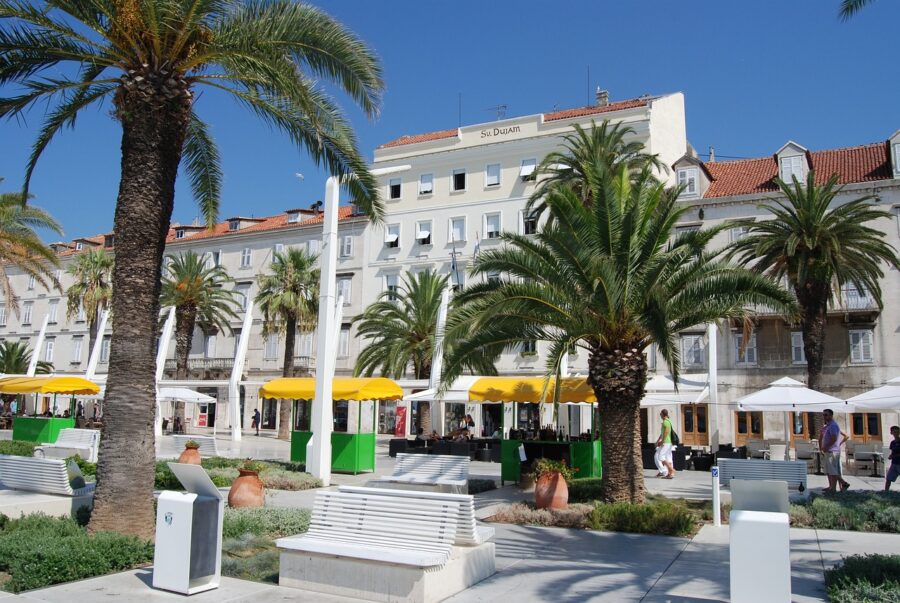
Split sees higher accommodation costs, especially in peak summer months. Basic hostels start around $25-30 per night. Mid-range hotels near Diocletian’s Palace typically run $80-150. Finding flights early helps secure better rates.
The compact old town means many attractions are walkable. Local buses connect to beaches and suburbs. Split’s ferry port provides links to nearby islands.
Getting between Split Airport and the city takes 30 minutes by airport shuttle bus. The main bus station sits conveniently next to the ferry terminal and train station in the harbor area.
Culinary Journey
Croatia’s two major cities offer distinct food experiences that showcase the nation’s rich culinary heritage. Zagreb brings Central European influences to traditional Croatian cooking, while Split serves up fresh Mediterranean flavors and seafood.
Zagreb’s Gastronomy

Zagreb’s food scene mixes Croatian traditions with Austrian and Hungarian influences. The city’s markets burst with local produce, especially the famous Dolac Market where farmers sell fresh vegetables, cheese, and meat daily.
Popular Zagreb dishes include štrukli – a pastry filled with cheese and cream. The city loves its hearty comfort foods like zagrebački odrezak – schnitzel stuffed with ham and cheese.
Local restaurants serve mlinci – a flatbread often paired with roasted duck or turkey. The surrounding hills produce excellent wines, especially white varieties from the Plešivica region.
Street food thrives here too. Try špica – the Saturday morning ritual of coffee and pastries at outdoor cafes.
Split’s Seafood and Dalmatian Cuisine

Split’s food centers on fresh seafood and Mediterranean ingredients. The city’s waterfront restaurants serve just-caught fish grilled with local olive oil and herbs.
Pašticada stands out as Split’s signature dish – beef marinated in wine and cooked with prunes and root vegetables. Local pršut (dry-cured ham) and sheep’s milk cheese pair perfectly with crisp white wines from nearby islands.
The city’s Green Market offers seasonal produce, olive oils, and dried figs. Don’t miss trying soparnik – a savory pie filled with Swiss chard that dates back to ancient times.
Fresh mussels, grilled sardines, and black risotto made with cuttlefish ink showcase Split’s connection to the sea.
Arts and Museums
Zagreb and Split offer distinct artistic experiences, with Zagreb’s rich museum scene and Split’s blend of ancient and modern creative spaces. Each city brings unique cultural offerings that reflect their individual character and history.
Cultural Institutions in Zagreb
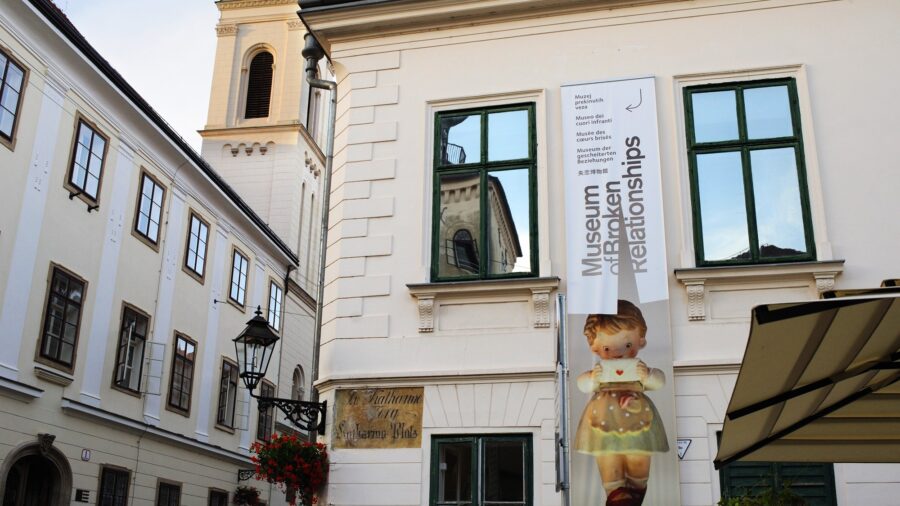
The Museum of Broken Relationships stands out as Zagreb’s most unique attraction. This award-winning museum displays personal items from failed relationships, with touching stories that connect with visitors on an emotional level.
Zagreb’s art scene features the Croatian Museum of Naive Art, which showcases the country’s folk art tradition through colorful paintings and sculptures by untrained artists.
The city’s galleries populate the Upper Town and downtown areas. The Strossmayer Gallery of Old Masters houses European paintings from the 14th to 19th centuries.
Split’s Artistic Venues
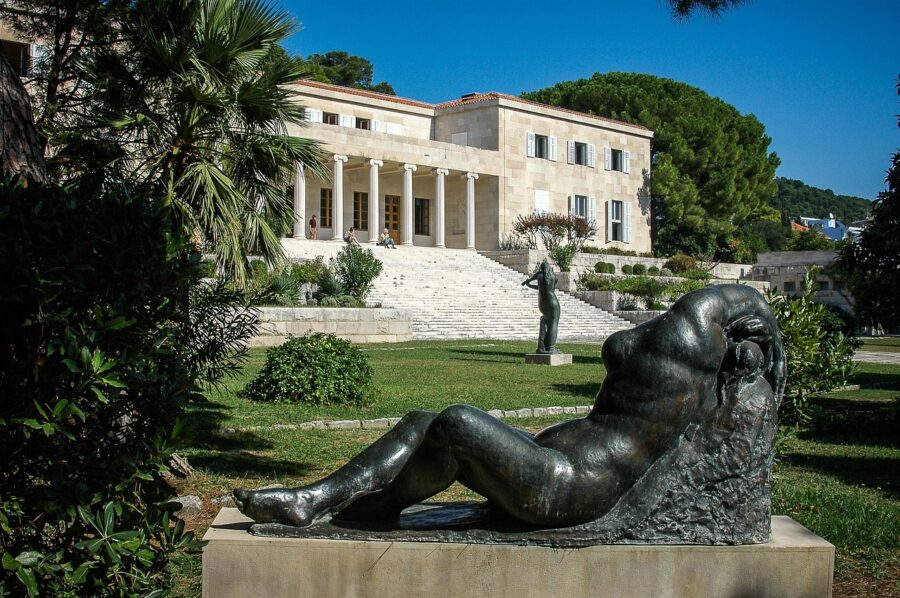
Split’s art scene centers around Diocletian’s Palace, where ancient Roman architecture meets modern galleries and exhibition spaces. Street artists display their work in the narrow limestone alleys.
The Meštrović Gallery celebrates Ivan Meštrović, Croatia’s famous sculptor. The museum sits in a beautiful villa overlooking the Adriatic Sea and contains his most important works.
The Split City Museum traces the area’s artistic development from Roman times to today. Its collection includes traditional crafts, paintings, and archaeological finds that tell Split’s creative story.
Shopping and Commercial Centers
Both Zagreb and Split offer distinct retail experiences that reflect their unique characters. Zagreb features large modern malls and traditional markets, while Split blends boutique shopping with Mediterranean charm.
Markets in Zagreb

The famous Dolac Market sits in Zagreb’s heart, where red umbrellas shelter vendors selling fresh produce, cheese, and meats. Local farmers bring their goods daily, making it a perfect spot to find authentic Croatian products.
Numerous shopping malls dot Zagreb’s landscape. Arena Centar stands as the city’s largest mall, housing over 200 stores. Avenue Mall and City Center One offer international brands alongside Croatian retailers.
You’ll find unique Croatian souvenirs at Hrvatskih Velikana. The street features small shops selling traditional licitar hearts, local wines, and handmade crafts.
Boutiques and Shops in Split
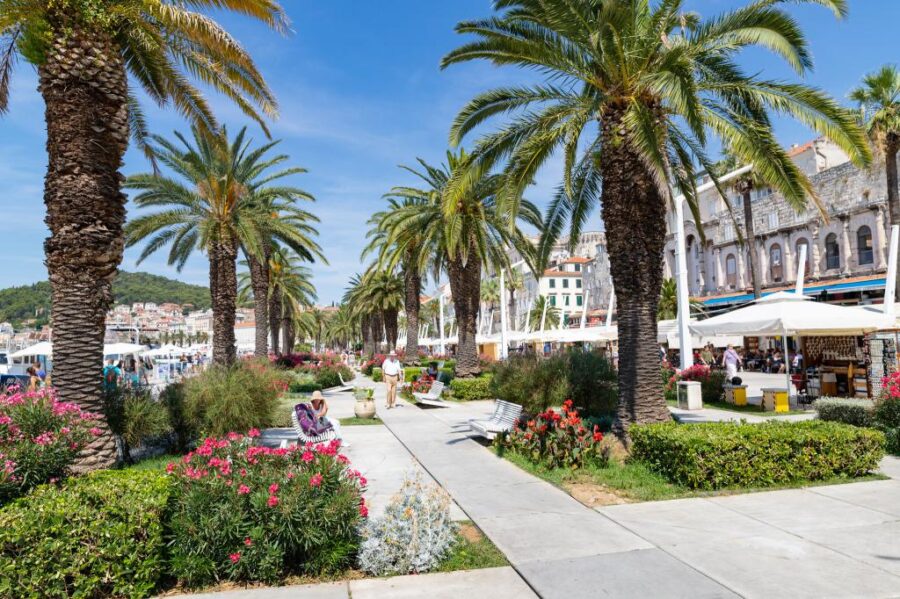
Split’s shopping scene centers around the historic Diocletian’s Palace. Narrow stone streets hold tiny boutiques selling Croatian designer clothes, jewelry, and artwork.
The Riva promenade hosts shops selling beach gear, souvenirs, and local olive oils. Many stores stay open late during summer tourist season.
Local artisans sell handmade goods in the palace basement halls. You’ll discover unique leather goods, paintings, and traditional Croatian coral jewelry.
Travel Costs and Budgeting
Zagreb tends to be cheaper for accommodations. 3-star hotels there average $70-90 per night. Restaurant prices are also lower, with main dishes typically costing $8-12.
Meanwhile, Split’s prices rise sharply during peak summer season. Hotels near the waterfront can cost $120-200 per night. Restaurants in tourist areas charge $15-20 for main courses.
Transportation costs differ too. Zagreb has an efficient tram system with tickets at $1.50 per ride. Split relies more on walking and taxis. However, summer water taxis to nearby islands add extra expenses.
Tourist Destination Appeal

Split’s coastal location makes it a gateway to popular spots like Hvar and other Dalmatian Islands. The Roman-era Diocletian’s Palace creates a unique atmosphere you won’t find elsewhere.
Zagreb shines with its museums and cultural events. The Upper Town’s cobblestone streets and St. Mark’s Church rival similar attractions in Vienna or Budapest.
Beach lovers flock to Split for easy access to the Adriatic. Day trips to Plitvice Lakes are possible from either city, though Zagreb offers a shorter journey.
The cities have different peak seasons. Split gets crowded in summer months, while Zagreb sees steady tourism year-round thanks to its indoor attractions and festivals.
Frequently Asked Questions
Zagreb and Split showcase Croatia’s diverse appeal, from coastal Mediterranean charm to sophisticated urban culture. Their distinct differences shape unique travel experiences in terms of attractions, costs, and seasonal activities.
What are the major differences between the cultural experiences in Split and Zagreb?
Zagreb’s cultural scene centers on museums, theaters, and art galleries. The city hosts many indoor cultural venues and maintains a Central European lifestyle.
Split embraces Mediterranean culture with outdoor cafes, seaside promenades, and ancient Roman architecture. The Diocletian’s Palace forms the heart of Split’s cultural identity.
Street art and music fill Zagreb’s Tkalčićeva Street, while Split’s culture comes alive in the narrow stone alleys of its historic center.
How does the cost of living in Split compare to that in Zagreb for tourists?
Zagreb tends to be cheaper for dining and accommodation during peak season. Meanwhile, hotels and restaurants in the capital maintain steady prices year-round.
Split’s prices fluctuate with tourist seasons. Summer months bring higher costs for lodging and meals, especially near the waterfront.
Transportation and groceries cost about the same in both cities. Local markets offer good value in both locations.
Can you highlight unique attractions in Split that are not found in Zagreb?
Split’s beaches like Bačvice offer swimming and seaside relaxation. The famous Riva promenade provides stunning Adriatic views.
Ancient Roman ruins integrate into daily life, with shops and cafes inside 1,700-year-old palace walls.
Island hopping opportunities abound from Split’s harbor to Hvar, Brač, and other nearby islands.
What transportation options are available for travelers moving between Zagreb and Split?
Fast trains connect the cities in about 6 hours. The rail journey offers scenic views of the Croatian countryside.
Buses run frequently and take around 5 hours. Many travelers prefer this budget-friendly option.
The drive between cities spans 161 miles and takes about 4 hours on modern highways.
From a local’s perspective, what distinct advantages does Zagreb offer over Split?
Zagreb provides better job opportunities and a more stable year-round economy. The city stays active through all seasons.
Green spaces and parks like Maksimir offer peaceful retreats within the urban setting.
The capital city hosts major business conferences and cultural events throughout the year.
What seasonal events or festivals are unique to Split in contrast to Zagreb?
Split’s Summer Festival brings outdoor theater and music performances to ancient Roman venues. The Ultra Europe music festival transforms Split’s stadium into an electronic music destination each July. Maritime celebrations and regattas occur throughout summer months, celebrating Split’s connection to the sea.
